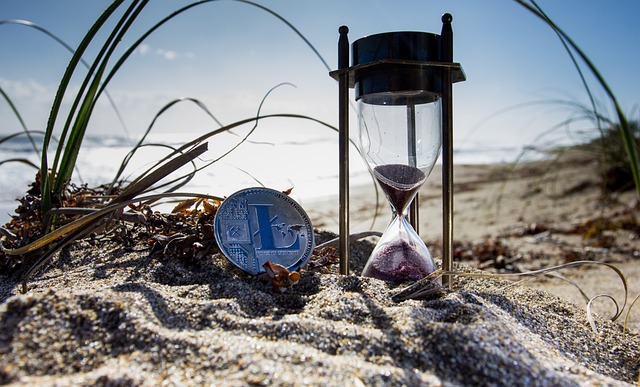Setting up a secure crypto wallet is crucial in the cryptocurrency ecosystem, offering protection for digital assets. Different types of wallets, like software and hardware options, cater to various security needs. Hardware wallets provide offline storage, ideal for long-term investments, while software wallets offer quick access with enhanced security measures such as 2FA. Choosing the right wallet involves balancing security, convenience, and functionality. Following best practices, including using strong passphrases, regular backups, and two-factor authentication, ensures maximum protection for crypto assets in a dynamic digital landscape.
In today’s digital landscape, understanding cryptocurrency wallets is crucial for securing your digital assets. This comprehensive guide delves into the world of crypto wallets, exploring essential aspects like choosing the right type and setting up a secure hardware wallet. Learn about advanced security measures such as encryption, backup strategies, and biometric authentication. By following best practices detailed in this article, you can confidently set up a secure crypto wallet, safeguarding your digital fortune with peace of mind.
- Understanding Crypto Wallets: The Digital Safes for Your Assets
- Security Measures: Protecting Your Crypto with Encryption and Backup
- Choosing the Right Wallet Type for Your Needs
- Setting Up a Secure Hardware Wallet
- Best Practices for Storing Private Keys and Passphrases
- Advanced Features: Biometric Authentication and Multi-Signature Options
Understanding Crypto Wallets: The Digital Safes for Your Assets

In the world of cryptocurrency, understanding crypto wallets is paramount. These digital safes are designed to securely store and protect your valuable assets, acting as a bridge between your funds and the blockchain technology that underpins them. Setting up a secure crypto wallet is not just about securing your coins; it’s also about ensuring easy access to these funds across various platforms and transactions.
There are different types of crypto wallets, each offering unique features and levels of security. Software wallets, for instance, reside on your device, providing quick access but raising potential security risks. Hardware wallets, on the other hand, offer the highest level of security by storing your cryptocurrency offline, making them ideal for long-term storage or when dealing with significant amounts. Choosing the right wallet depends on your use case—whether you’re a casual investor or a seasoned trader—but one thing remains clear: setting up a secure crypto wallet is crucial to safeguarding your digital fortune.
Security Measures: Protecting Your Crypto with Encryption and Backup

In the realm of cryptocurrency, security measures are paramount. One of the most effective ways to protect your digital assets is through encryption. Encryption transforms your sensitive data into a coded format that can only be accessed with a specific key, ensuring that even if someone gains unauthorized access, they won’t be able to decipher your funds. A robust crypto wallet, such as those offered by reputable providers, serves as the gateway to this secure space.
Setting up a secure crypto wallet involves choosing a trusted platform and enabling encryption features. Additionally, regular backups are crucial. Just as you’d back up important documents or financial records, backing up your crypto wallet ensures that even if your device is compromised or loses functionality, your funds remain accessible. This dual approach of encryption and backup safeguards your cryptocurrency, fostering peace of mind in the dynamic landscape of digital assets.
Choosing the Right Wallet Type for Your Needs

When setting up a secure crypto wallet, the first step is to consider your specific needs. Different types of wallets cater to varied use cases—from long-term storage to frequent transactions. Hot wallets, for instance, are ideal for daily trading as they’re connected to the internet and offer quick access to funds. On the other hand, cold wallets like hardware wallets or paper wallets are more secure for long-term storage, keeping your crypto assets away from online threats.
Choosing the right wallet type involves balancing security, accessibility, and functionality. For enhanced security, consider a hardware wallet that stores private keys offline. Software wallets, such as mobile or desktop applications, offer convenience but require robust security measures like two-factor authentication (2FA) to protect your funds from cyberattacks. Ultimately, aligning your wallet choice with your crypto usage will ensure a safe and efficient experience.
Setting Up a Secure Hardware Wallet

Setting up a hardware wallet is a robust way to secure your cryptocurrencies, offering offline storage for enhanced safety. These physical devices provide an extra layer of protection against online threats like hacking and phishing attacks. To get started, choose a reputable brand known for its security features. Once selected, follow the manufacturer’s instructions for setup. This typically involves generating a recovery seed phrase, which acts as your unique access code; it’s crucial to write this down securely and keep it in a safe location.
After initial setup, ensure your wallet is locked with a strong password. Many hardware wallets support biometric authentication too, adding an extra layer of convenience and security. Regularly updating the firmware and keeping your wallet’s software up-to-date is essential for maintaining optimal security. This simple process transforms your device into a robust vault for your digital assets.
Best Practices for Storing Private Keys and Passphrases

Storing private keys and passphrases securely is paramount for maintaining control over your cryptocurrency assets. The best practice involves setting up a secure crypto wallet, preferably hardware-based, that offers advanced protection against unauthorized access. These wallets store your keys offline, minimizing the risk of theft through hacking or malware attacks. Additionally, enabling two-factor authentication (2FA) adds an extra layer of security, ensuring only you can access your funds.
It’s crucial to keep your passphrases unique and complex, avoiding personal information that could be guessed easily. Consider using a password manager for generating and storing these phrases safely. Never share your private keys or passphrases under any circumstances. Backups are essential, but store them securely in different locations to prevent compromise if one copy is discovered. Regularly updating your recovery phrases maintains the highest level of security.
Advanced Features: Biometric Authentication and Multi-Signature Options

In today’s digital era, advanced features in cryptocurrency wallets are more important than ever for securing your assets. One such feature is biometric authentication—a game-changer when it comes to protecting your wallet from unauthorized access. By using unique biological identifiers like fingerprints or facial recognition, you can set up a secure crypto wallet that only you can unlock. This ensures that even if someone physically gains access to your device, they still won’t be able to gain entry without your specific biometric data.
Additionally, multi-signature options further fortify the security of your crypto wallet. This feature requires multiple approvals for transactions, making it a robust defense against fraudulent activities. By setting up a multi-signature system, you can designate trusted individuals who need to confirm any significant transactions. This not only provides an extra layer of protection but also offers peace of mind, especially when dealing with substantial sums or sensitive data within your secure crypto wallet.
In conclusion, setting up a secure crypto wallet involves understanding the unique security measures like encryption and backup, choosing the right type tailored to your needs, and implementing best practices for storing sensitive information. By following these guidelines and exploring advanced features such as biometric authentication, you can ensure the safety and accessibility of your digital assets in this evolving landscape.
